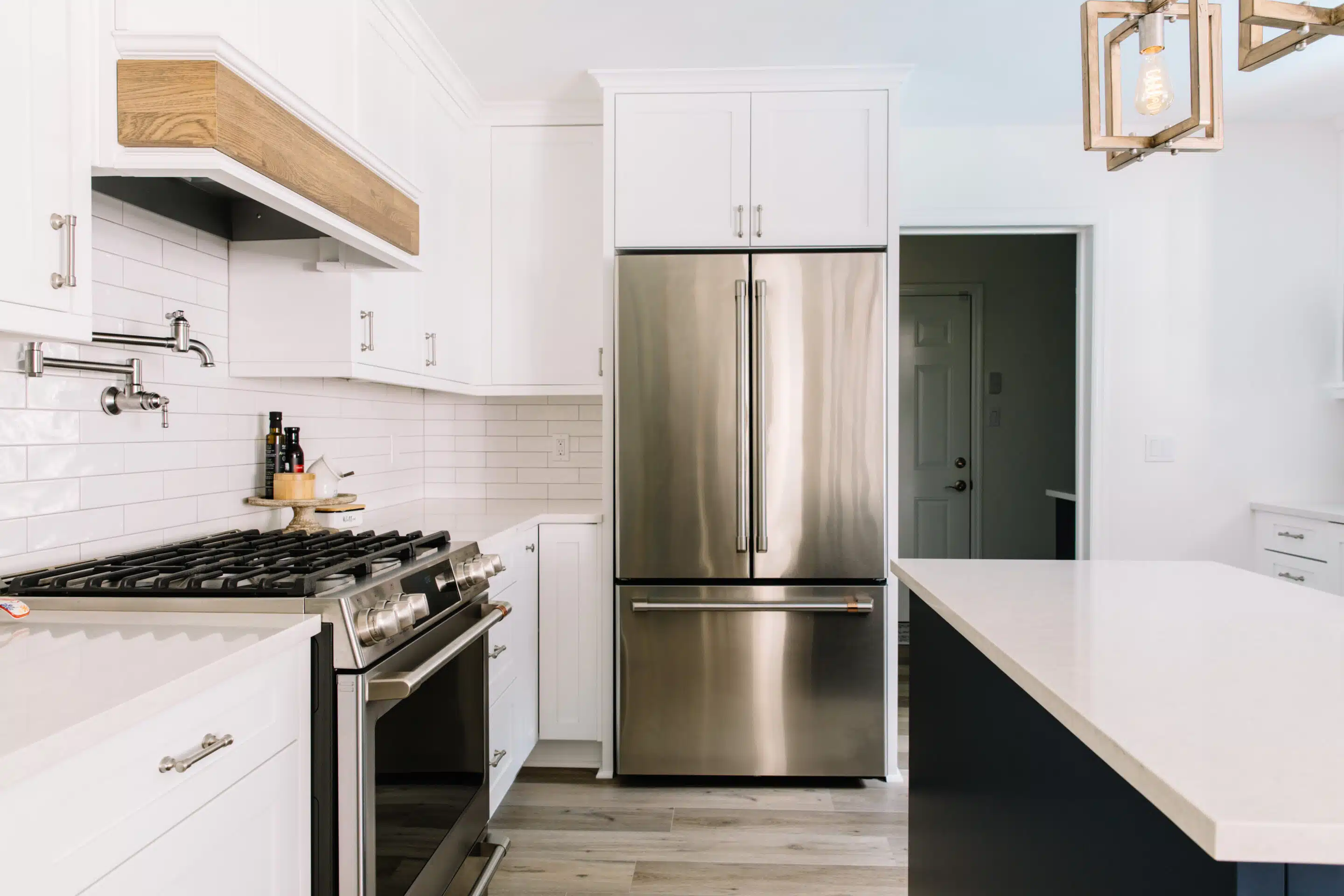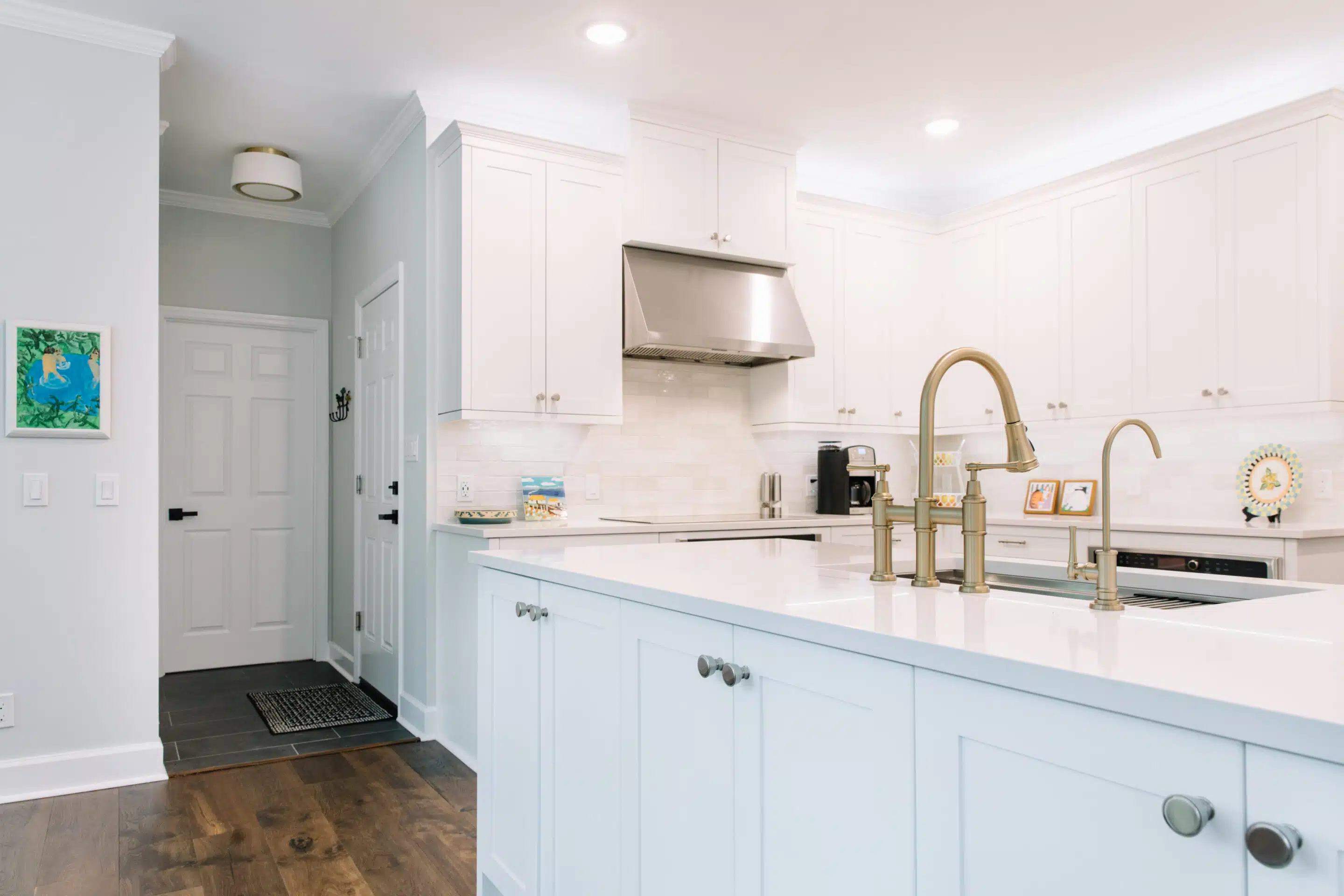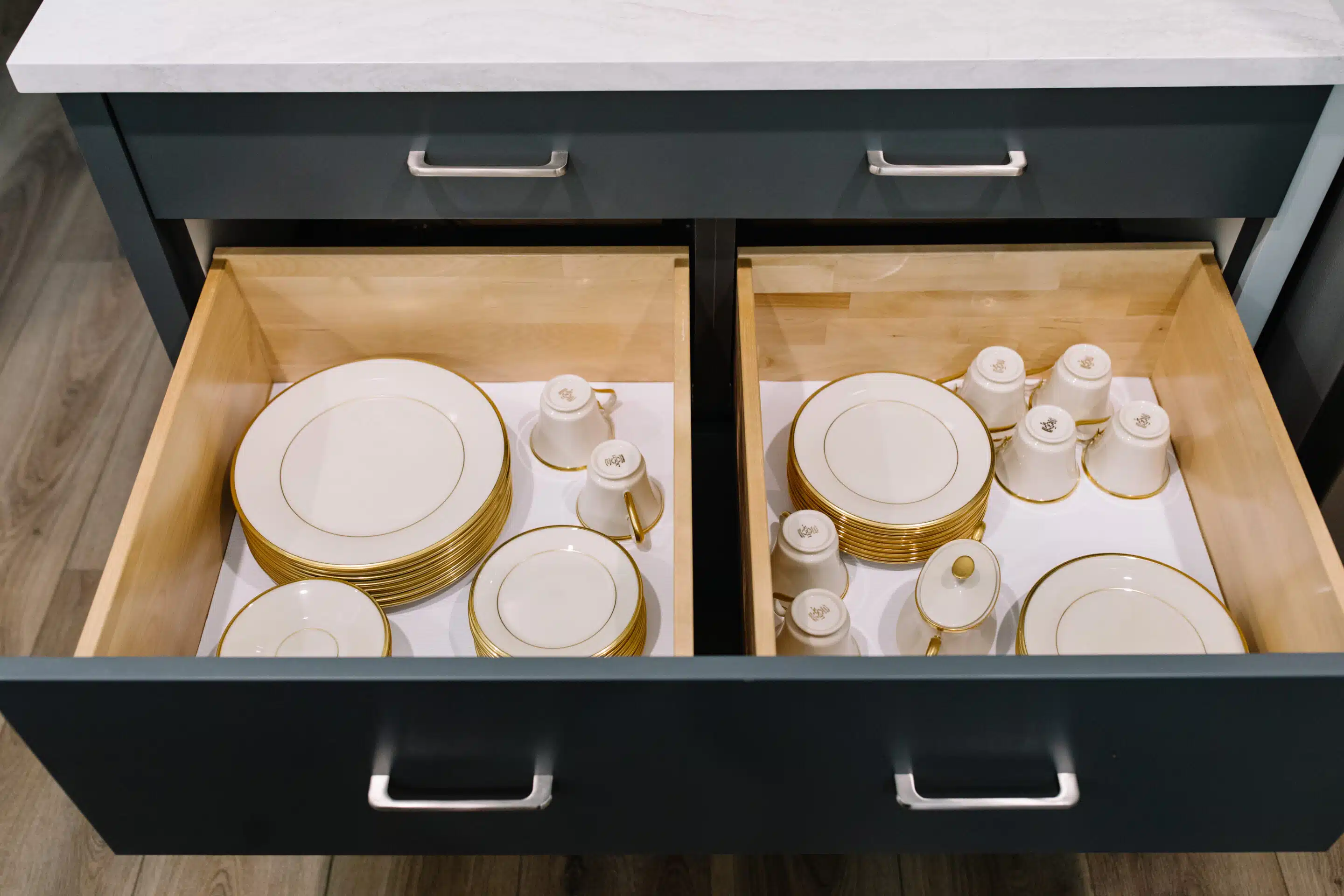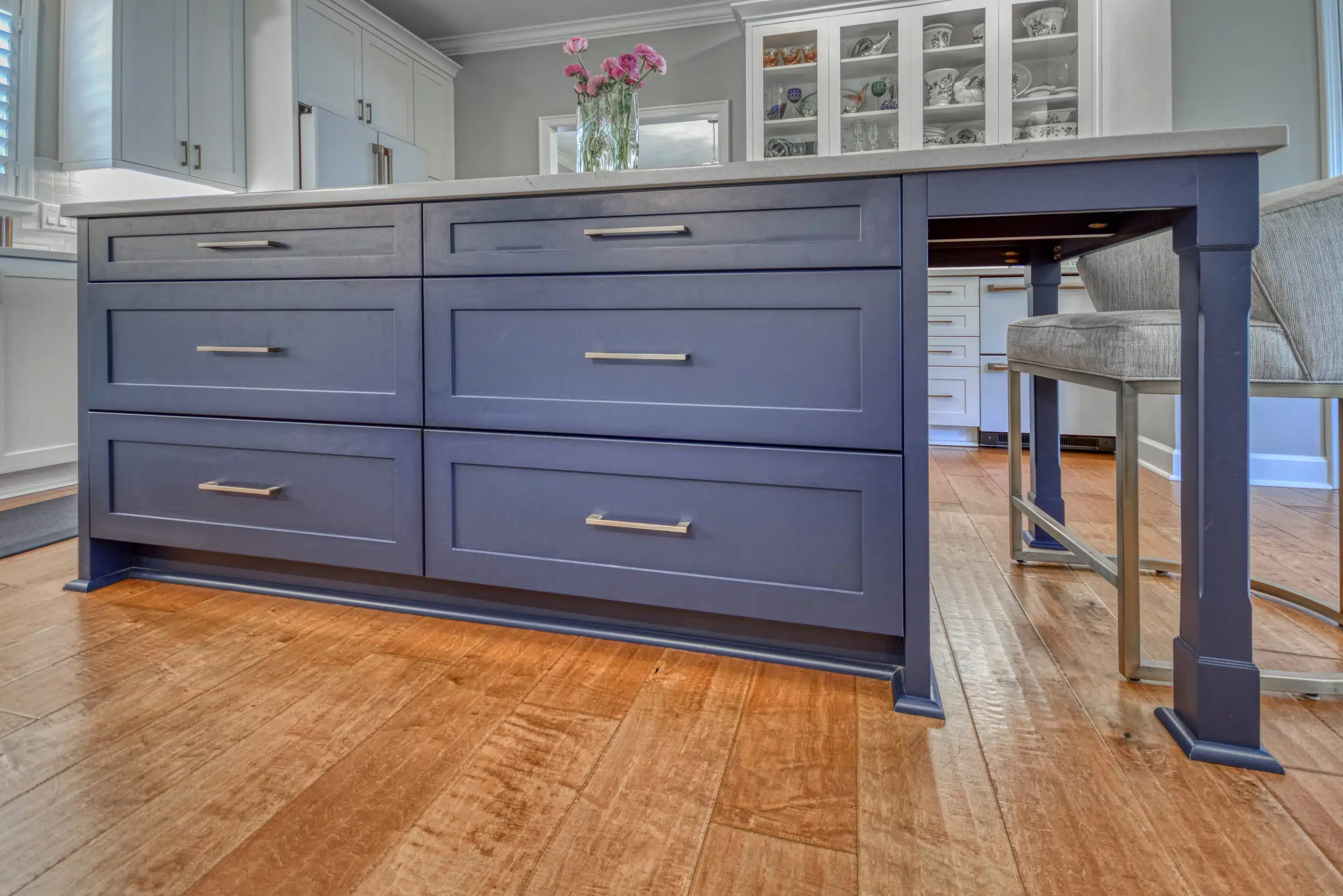If you are thinking about remodeling your Tallahassee kitchen, you know what a big decision choosing your kitchen cabinets is. After all, cabinets represent the most significant single feature of your kitchen and can account for the largest chunk of your budget. Kitchen cabinets affect your space’s look, feel, and functionality more than any other factor, so it’s vital to choose the best type of cabinets for your remodel.
Unfortunately, there are a lot of myths surrounding what makes a quality cabinet, which could make you feel less confident in your decisions. Read on to learn about some of the most common kitchen cabinet myths and discover how to choose the perfect cabinets for your space.
Myth #1: “All Wood” Means High Quality Cabinets
Click the image to see this full project
Many assume that anything with the label “all wood” can be considered the most long-lasting, durable, and attractive cabinets. Unfortunately, this is not always the case.
Many manufacturers try to sell their cabinets by touting “all wood” construction but they are using thinner, low quality, soft wood plywood. If choosing a plywood cabinet make sure its made from high quality cabinet grade plywood. This plywood is 5/8 or 3/4 of an inch thick, has zero voids and is made from hardwoods, not softwoods.
Many of the best cabinet manufacturers are switching to high quality particle board for their cabinets. These are high density fiberboard products with advanced resins that make them very durable and water resistant.
In general, cabinet boxes are either made from plywood or particle board. Solid wood is actually not used in cabinet box construction as it can sag, split and warp easily, especially in places with high humidity–like Florida.
When choosing between plywood and particleboard, the most important factor is not the material, but the grade.
Plywood
- is made in many grades, determined by how many layers of wood are glued together to make the plywood, and by what types of wood are used.
- comes in ½-inch, ¾-inch, and ⅝-inch thicknesses, and is made with hard or soft wood.
- is generally higher quality when it is made of harder wood and has more layers to it.
- can have hard-to-discern quality, so make sure you look at the price. If you choose the lowest-priced plywood option, you can expect low-quality material.
Also keep in mind that some cabinet companies use very cheap, low-quality plywood just so they can stick the “all wood” label on their cabinets.
Particleboard cabinets
- can have a bad rap, but have come a long way from the expensive, heavy, and fragile particleboard of the past.
- are much stronger now and are a very good option for kitchen cabinets.
- come in #15- and #45-grades, which refer to the density per cubic foot.
- are generally cheaper than plywood and provide an excellent alternative for kitchen cabinets.
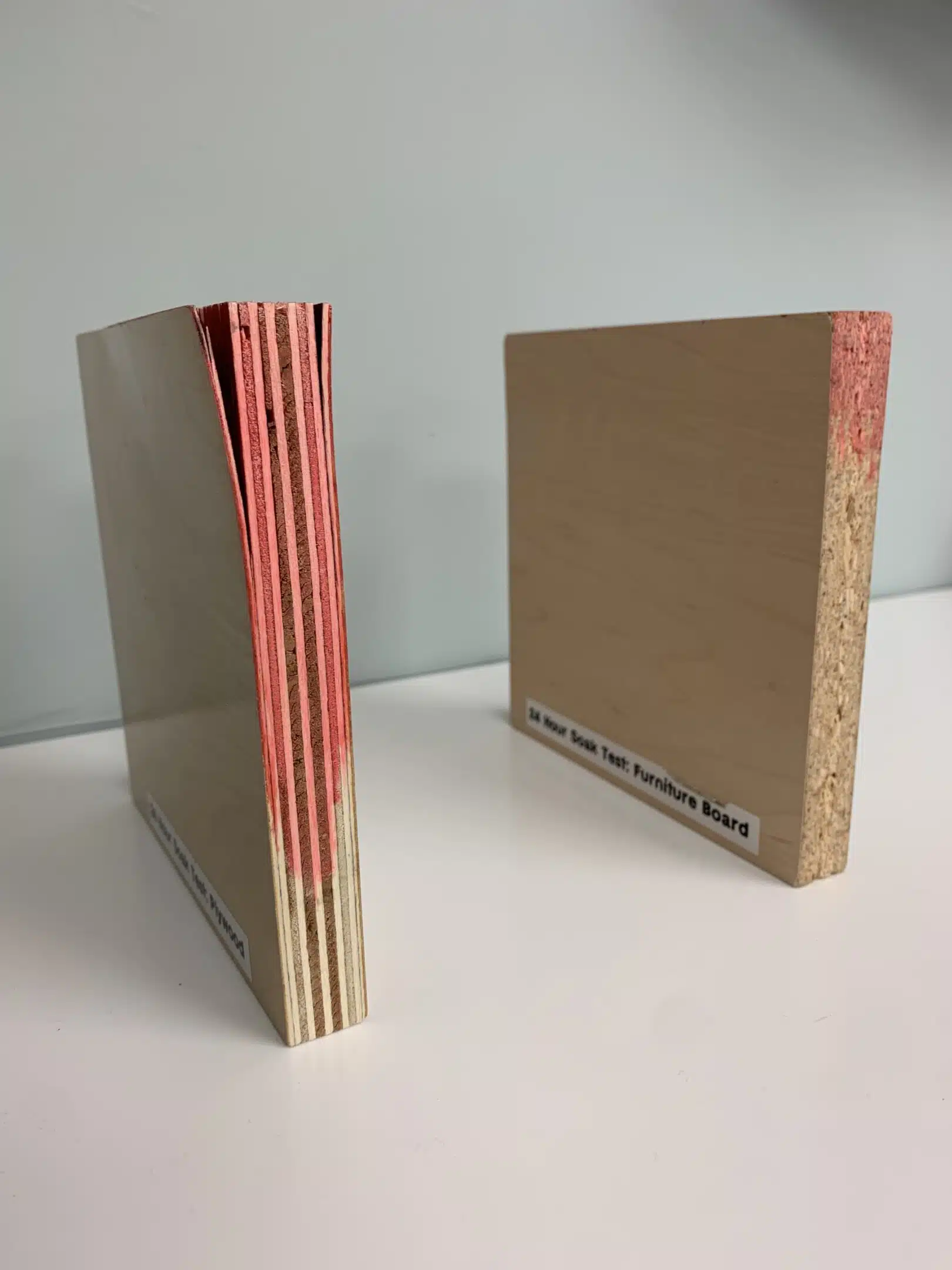
Results of soaking cabient grade plywood (left) and high quality particle board (right) in water for 24 hours. Modern particle boards perform well.
One interesting fact about the difference between plywood and particleboard is that particleboard is much less susceptible to water damage. We soaked a piece of cabinet-grade plywood and a piece of #45 (industrial grade) particleboard in water with food dye for 24 hours, and the results clearly showed the plywood wicking the water and delaminating, while the particleboard remained fairly intact. You can see the results in person in our showroom.
When choosing the material for your kitchen cabinets, don’t be fooled by the “all wood” label. Choose high-grade plywood or high-grade particleboard with confidence and you will be happy with your finished product.
Myth #2: Wood Drawer Boxes with Dovetails Mean Quality
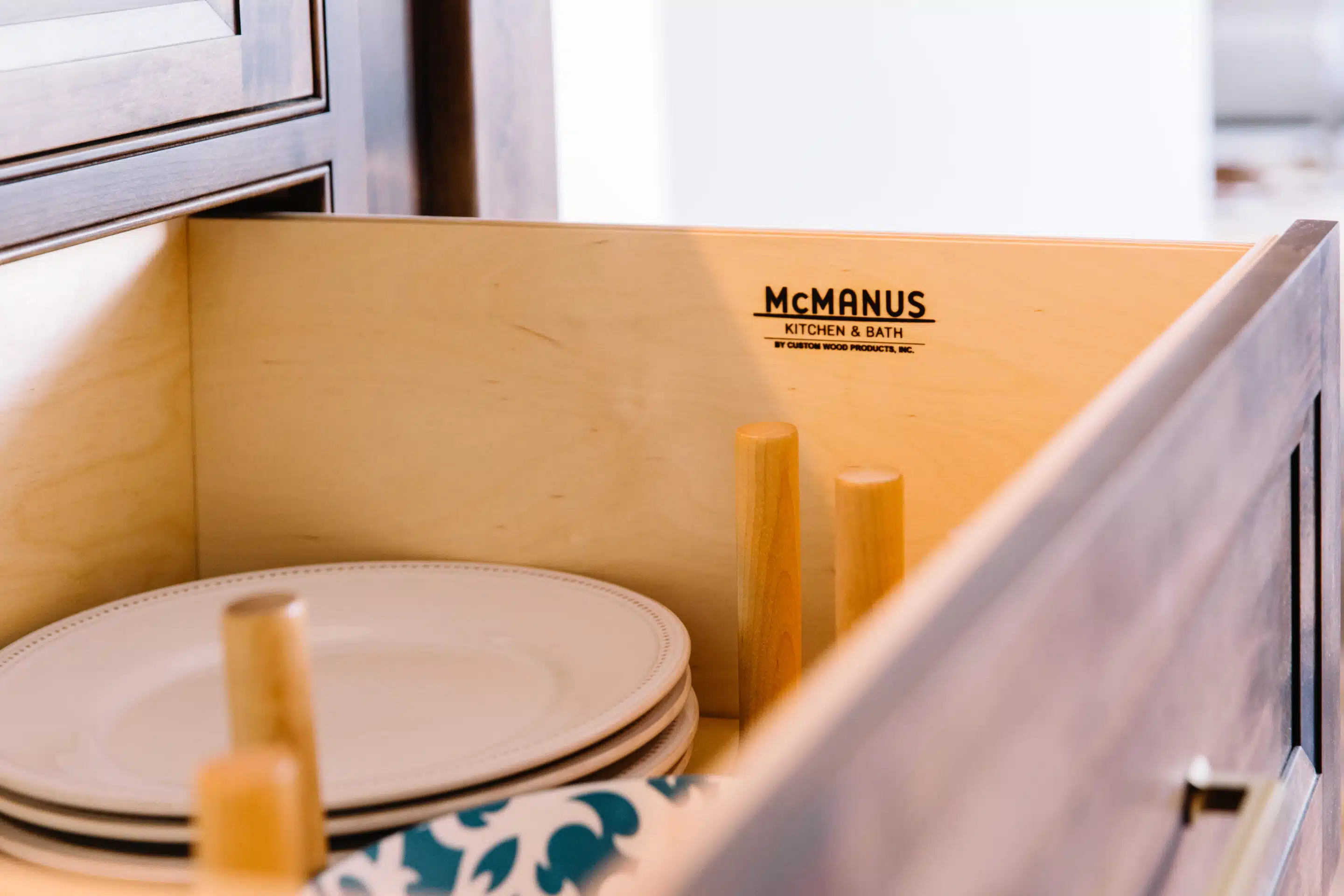
Another marketing trick cabinet companies like to use is promoting “dovetail drawer boxes”. Again, the devil is in the details as there are high quality dove tails and cheap, poor quality ones.
A drawer box, poorly built, is often the first thing to fail in a cabinet. It seems reasonable to think that opening a drawer and looking for a wood drawer box and a dovetail joint would assure you of the quality of the cabinetry. But there are a few more factors to consider.
- Make sure the drawer bottom is plywood and is ½-inch thick. It should have a good polyurethane or shellac finish to make it water-resistant and stronger. Hardwoods make the best drawer boxes, and cheap options tend to be, well, cheaply made. Don’t discount metal drawer boxes as a viable option, either. As long as the quality is good, they can be a faster option that offers more organizational choices.
- When it comes to joints, most people assume that a dovetail joint immediately speaks of high quality. It can…or it might not. Whether it is hand-cut or factory-made, make sure the dovetail has no gaps between the pins (the thinner wedges) and the tails (the thicker wedges). The edges should be smooth and finished. Sometimes they are left rough, but this leaves the drawer open to potential moisture damage.
- Pin or dowel drawers are a great option for quality cabinetry. Made more securely now than they used to be, they are often less expensive and are strong and reliable. They can be a more versatile option than dovetail joints in situations with unique or custom drawers. You do want to avoid stapled, nailed, or screwed drawer joints as they can indicate lower quality.
Myth #3: Soft Close Hardware Means Quality
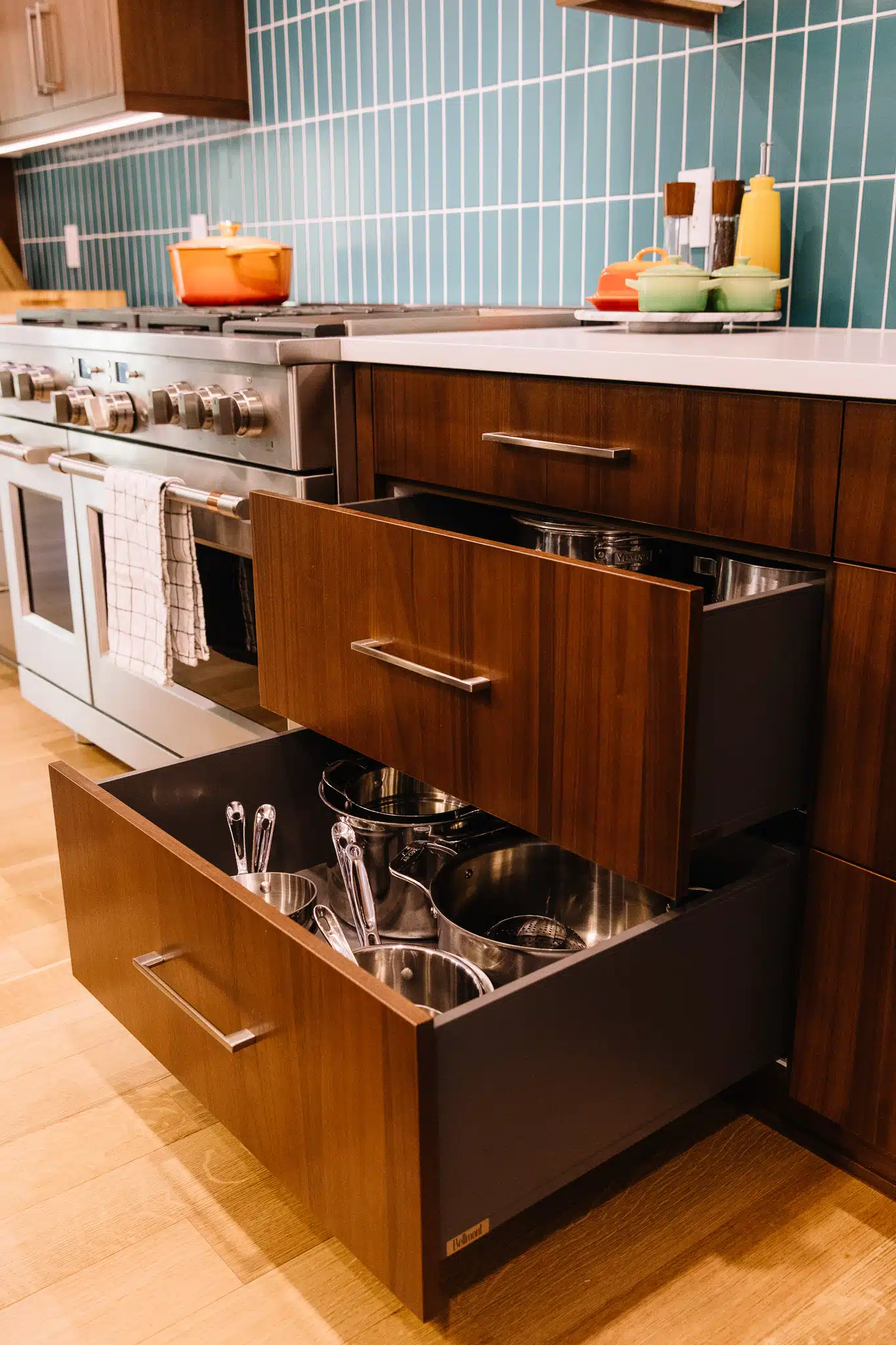
Soft close hardware used to be a sign of a quality cabinet because the harware was expensive and only the best compaies would use them. But today there are all kinds of cheap import hardware companies that make softclose hardware.
Soft close hardware, which makes cabinet doors and drawers close softly with no slamming, is an important feature in your kitchen cabinets, and one that many people look for. But as with other components, it is important to look for quality soft close hardware.
First of all, ensure that all hinges and drawer glides are 6-way adjustable, not 4-way. This means that they can be adjusted up/down, in/out, and left/right, so that each door or drawer closes correctly, flush with its cabinet. Soft close hardware should be made of quality steel since these pieces need to stand up to constant use without breaking. Drawer glides should also be full-extension, easy to open with no resistance, and quiet.
For Hinges:
- We recommend Blum or GRASS brands for the absolute highest quality.
- Midrange hinges include Hettich and Salice brands.
- Many RTA (ready-to-assemble) cabinets, usually imported from Asia, use low-quality hinges. DTC is an example of hinges we would not recommend using.
To learn more information on all types of quality hinges available, visit our showroom or check out this blog post.
For Drawer Glides:
- The very best are Blum Movento. They feature concealed runners, full extension (or even farther for waste container drawers), more versatility in design, and high load capacity. Click here for a video highlighting these glides.
- Midrange glides include Blum and Grass, and lower quality, but still midrange would be Hettich and Salice brands.
- Stay away from cheap drawer glides with no name brand attached.
Myth #4: Custom Cabinets Mean Quality
Click the image to see this full project
Perhaps the most pervasive and expensive myth surrounding kitchen cabinets is that custom cabinets always mean quality. This can sometimes be true–some custom cabinets are beautiful, durable, well-constructed, and worth the extra expense. Unfortunately, this is not always the case.
The biggest potential problem with custom cabinets is the finish. Because these cabinets are made in custom shops, many times they are hand-sprayed in the shop or on-site at your remodel location. This can result in a poor-quality finish since the conditions for spraying are not ideal. Contrast this with semi-custom cabinets, which are generally finished in dust-free environments with expensive flatline spray systems. Semi-custom cabinets usually use UV-catalyzed finishes that are very durable as well.
Click the image to see this full project
Another issue that can come up with custom cabinets is that they are not always made in standard sizes. Sometimes this can be an asset–a tight corner or a funky layout might require a specially-sized cabinet. But other times, they can make other parts of the kitchen remodel, like countertops and appliances, more difficult to fit.
Other potential drawbacks include a longer lead time for custom work, and sometimes, subpar wood and hardware may be used in order to save costs. Custom cabinets can be a great addition to your kitchen remodel, but it’s important to do your homework.
So Which Type of Cabinet is Right For You?
Click the image to see this full project
Several factors need to be considered, including true quality, sizing, finishes, and wood type. These will impact the cost of your cabinets, as well as the final look and functionality of your kitchen.
The three common options when choosing cabinets are stock, semi-custom, and custom:
Stock Cabinets
- For the most part, only lower quality cabinets come in stock sizes anyomre. All the better manufacturers can do custom sizes. Stock cabinets are sold by all kinds of people… countertop dealers, handymen, lumber yards… there are not dealer reuirements and they are often beign sold by people who don’t know that much about cabinets.
- Stock cabinets are what you’d buy from a big box store. They are built in 3” increments, meaning the sizing may or may not be exactly what you’re looking for in your kitchen remodel. Produced in a few colors, these cabinets come in 8-12 door options. They are not the best quality, but they are the least expensive option. Click here for more pros and cons of this option, along with information about the brand we recommend using if you decide to go this route.
Semi Custom Cabinets
- Semi-custom: this is one of our favorite options. Semi-custom cabinets are sold in showrooms and sold to qualified cabinet dealers. They are good quality and offer dozens of door options and endless colors. The sizes are in ¼-inch increments, making them almost fully customizable to your space.
Custom Cabinets
- Custom: could be a great option, might be low quality. This is one you really need to be careful with and check out thoroughly before you buy. Colors and door options are endless. There will not necessarily be quality control. Sizes, again, are not standard. Custom cabinets are the most expensive option.
Let us help you choose quality cabinets
Choosing the important cabinetry elements for your kitchen remodel can be overwhelming. It’s tempting to make decisions based on common myths, but in the end, you and your family will be much happier with the results of your project if you dig a little deeper. And we are here to help! Schedule a consult, visit our showroom, or contact us with any questions you have. We would be delighted to answer your questions and partner with you in your Tallahassee kitchen remodel.
Ready To Remodel?
McManus Kitchen and Bath is a design and build company specializing in kitchen and bath remodels
